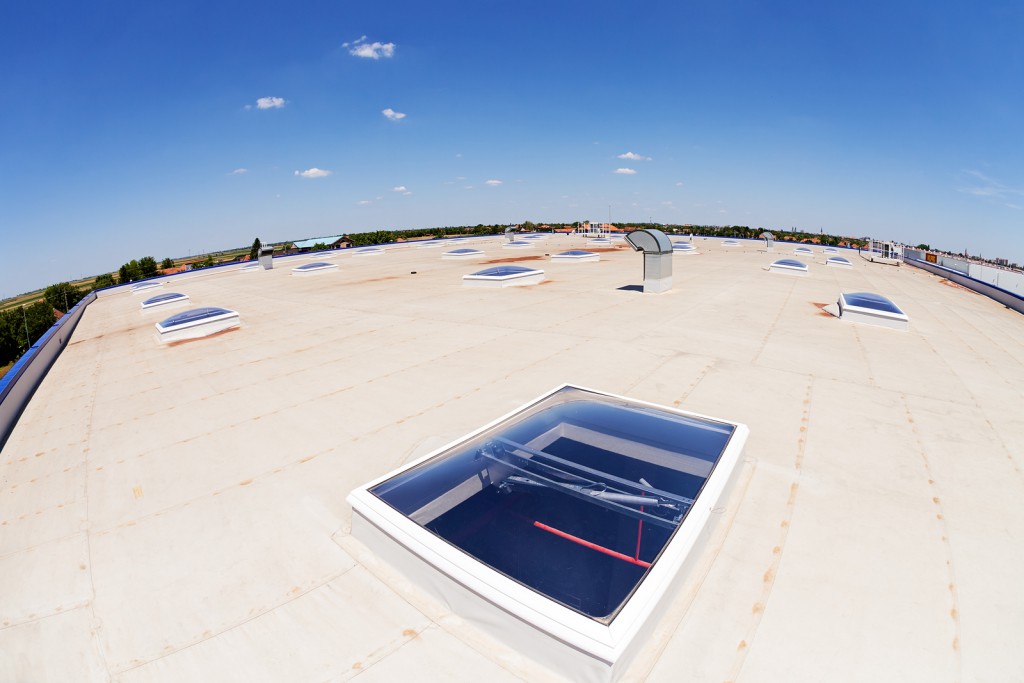Our Most Common Flat Roofing Commercial Services Include:
A flat commercial roof provides the benefits of being often more cost-effective – both in construction and maintenance – and easier to install than sloped roofs. Additionally, flat roofs provide ample space for other equipment including AC vents, exhaust or, perhaps especially relevant in a city with the nickname “Elm City”, a flat roof also allows for green roof materials to assist with water drainage as well as energy efficiency.
While we are able to accommodate and easily install a number of roofing materials, the most common include: hot tar roofs, white TPO roofs, EPDM roofs and torch down roofs.
Perhaps the most widely used in the U.S. over the past century is the hot tar system. This entails a multi-ply roof system, also sometimes referred to as “built up roof” or “BUR”, and composed of layers of fiberglass-based asphalt and reinforcing plies. The end result is a waterproof, durable roofing system.
A white TPO roof, on the other hand, is an emerging trend in the construction market. This is made of a single-ply membrane made of ethylene propylene rubber. The seams are then welded together with hot air to create a virtually seamless system. The roof is extremely sturdy and highly resistant to tearing, leaks, chemicals, fires and other extreme weather.
If you’re looking for an incredibly versatile and robust flat roof option, the EPDM roof is a great choice. This is often referred to as rubber roofing and primarily composed of two elements: ethylene and propylene (similar to the white TPO roof). When combined, the ingredients fuse to create a waterproof surface. Additionally, EPDM roofs are available in both black and white, and a wide selection of widths and thicknesses.
We are also well versed in the installation of torch down roofing systems. The approach is similar to hot tar roofing, with multiple layers of tar and reinforcing plies. The difference of this system however – and where the name derives from – is the actual method of application in which the sheets are torched together to join seams and create a large rubber sheet on top of a fiberglass base
